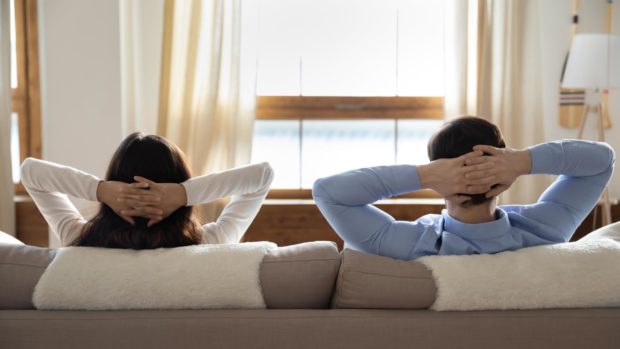In my last column I talked about looking after your mental health whilst steering a business through the pandemic. Much of it focused on dealing with feelings of failure and a lack of control.
This month, we pick up where we left off and take a closer look at how to start creating a balance between much-needed structure whilst remaining mentally (and structurally) flexible.
At the beginning of the first lockdown, almost a year ago now, creating a routine for your day was important to our mental health. Before the pandemic, work, school and other activities naturally structured our day. When lockdown happened, much of this was taken away, leaving some of us with seemingly endless days ahead. Routine, however, is something we rely on, not only to be productive in our work, but also for our mental health.
Uncertainty leads to stress and anxiety. Over the past twelve months, we have had a big dose of all three of those. Creating a structure whether it is for working from home, homeschooling or anything else, is helpful.
Having said that, there can be too much of a good thing. Planning one video call session after another, whether it is for work or school, can leave you feeling exhausted. The same might happen to your kids. Screen time is presence time. Whether it is a meeting or a class, you are ‘on’, even when you are not the main presenter.
As a consequence, too much structure can leave you feeling pressured, which may in turn lead to increased feelings of anxiety. Allow yourself the freedom not to do anything. Just sitting and daydreaming is ok. Compare a day of working from home to a pre-pandemic work day. Those ‘normal’ working days had downtime, whether it was during the commute or when having a five-minute chat about the weather or last night’s football scores with a colleague.
Whilst commuting from your bedroom to your desk may take up much less time, this doesn’t necessarily mean you suddenly gain unlimited mental capacities to focus and pack more into a day. In fact, you may find that your natural working rhythm does not coincide with the 9 to 5 office day structure you were used to. When homeschooling, maybe your kids can concentrate better in the afternoons than they do first thing in the morning.
You may even find that there are days when it feels like you are getting nothing done. That’s completely normal. Humans are not robots. Even in our ‘normal’ workplaces, we have days when we are seemingly superhuman, interspersed with days when we tick fewer items off our to-do list.
Your kids will have had pre-pandemic school days where they came home buzzing with excitement followed by others when they could barely remember which subjects they had studied. Not leaving the house simply makes these differences more visible.
Noticing highly productive versus not so efficient days is only one step. How we react to these is more crucial: chastising ourselves for our lack of achievements on any given day does not usually create motivation for the next day.
Instead, allowing off-days and forgiving ourselves for spending an hour staring out of the window and watching the snow melt will leave us in a more content mental state. Contentedness makes a much better base for a productive day ahead, following some degree of structure.
We do need both – structure to create a certainty as well as flexibility to deviate from that routine to allow our mind to wander. Most of all, it’s important to cut yourself (and your family members) some slack, shrug off an off-day and try again tomorrow.
Professor Ewan Gillon is a Chartered Psychologist and Clinical Director for First Psychology Scotland with centres in Aberdeen, Inverness, Perth, Dundee, Edinburgh, Glasgow and Borders.











